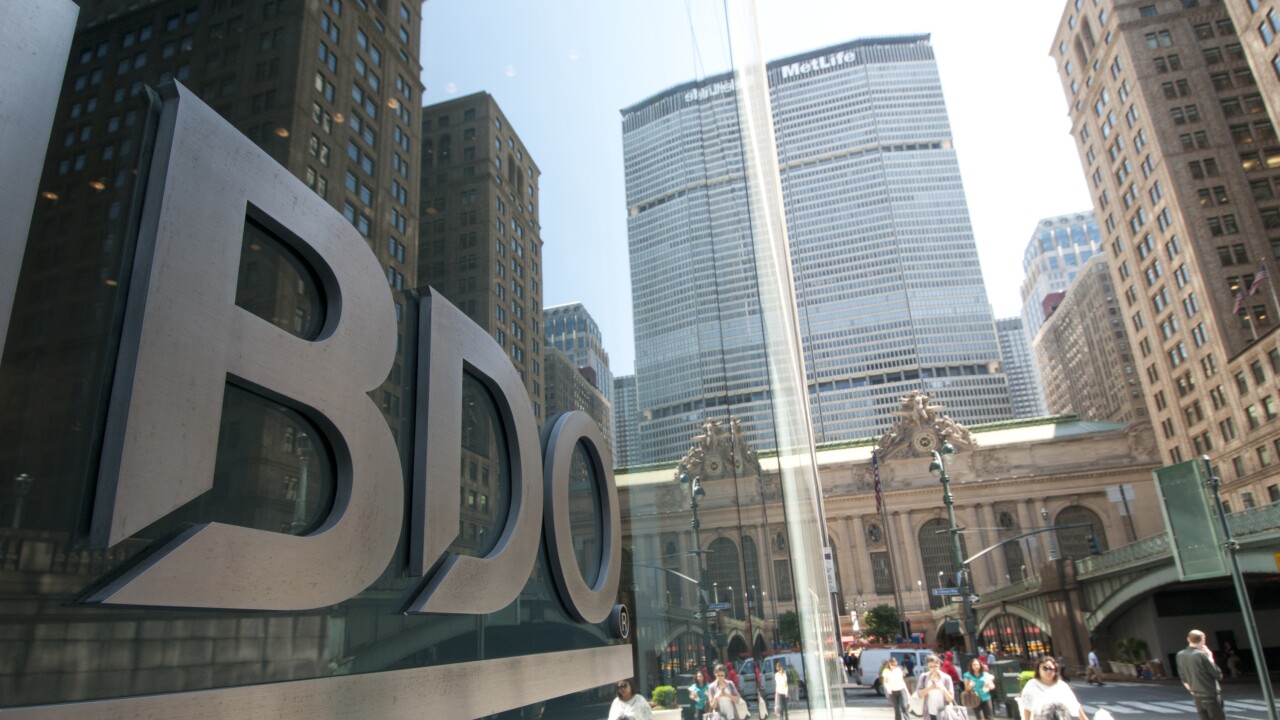IMGCAP(1)]Several lucrative federal tax incentives have been extended and enhanced for energy efficient design, construction, and improvement of buildings and homes.
Companies that developed properties without necessarily trying to "go green" are often pleasantly surprised to discover that they qualify for these credits and deductions. The types of taxpayers that are likely to benefit from the legislation include commercial developers, homebuilders, apartment and condominium developers; architects and designers of government-owned buildings; and those making improvements to commercial buildings.
Under the Emergency Economic Stabilization Act of 2008 and the American Recovery and Reinvestment Tax Act of 2009, some of the tax incentives for going green include:
Section 179D - Commercial Developers, Real Estate Investors, and Architects
Section 179D offers a depreciation deduction of 30 cents to $1.80 per square foot for eligible improvements to commercial buildings placed in service after Jan. 1, 2006. The deduction rewards commercial developers and real estate investors for efforts to reduce energy use in the categories of building envelope; heating, ventilating and air conditioning; and interior lighting systems. Residential rental buildings also qualify for this tax deduction if the property is four stories or taller.
Ideal candidates are taxpayers who have made improvements to at least 50,000 square feet of their property LEED (Leadership in Energy and Environmental Design)-certified, Energy Star buildings or participants in utility rebate programs are inherently great candidates for the full deduction. The qualifying improvements run the gamut, from new lighting retrofits to full-scale construction projects.
[IMGCAP(2)]Building owners are not the only beneficiaries of this tax deduction. A key provision in the code is the way the full deduction can be transferred in the case of a government building. As is the case with commercial developers, architects that design energy-efficient buildings for the government will be eligible for a full, $1.80 per square foot deduction. Therefore, any architect designing government buildings, schools, etc., with energy efficiency in mind should strongly consider this deduction.
Obtaining this deduction requires a licensed professional engineer or contractor to certify that a detailed energy analysis of the property's improvements, which typically involves energy simulation modeling and lighting power density calculations, per IRS requirements.
Qualifying improvements for this tax deduction must be placed in service by Dec. 31, 2013.
Section 45L - Apartment, Condominium, and Single-Family Residence Developers
This is one of the most beneficial tax incentives offered to developers of apartments, condominiums and single-family residence developers, who are eligible for a $2,000 federal tax credit for each energy-efficient dwelling unit constructed. Specifically, a $2,000 tax credit can be applied toward the development of apartment units and new homes, and a $1,000-$2,000 credit for manufactured homes, for properties constructed after August 2005. This means a developer of a 50-unit apartment complex could earn up to $100,000 in tax credits.
To qualify, a dwelling unit must provide a level of heating and cooling energy consumption significantly less than certain 2004 energy standards. Given that current energy codes have evolved tremendously over the past five years, many developers built to specifications that qualify them for this credit.
Other good candidates include Energy Star Homes, LEED developments, and participants in utility rebate programs. Another particularly likely candidate for the Section 45L credit is developers of Affordable Housing projects, as the building codes in many states for these types of projects call for standards that mirror or exceed the qualifications for the tax benefit.
The process for obtaining these credits requires a detailed energy analysis that must be certified by a qualified third party.
Section 48 - Energy Credits
Section 48 benefits those who invest in solar energy, providing a 30-percent tax credit. A 10-percent credit is given for the purchase of qualifying stationary microturbine power plants, certain geothermal equipment and heat pumps, and certain combined heat and power or cogeneration systems. These credits apply to property placed in service after Dec. 31, 2005 and before Jan. 1, 2017.
The Energy Credit property has a tax recovery period of five years, allowing for the potential eligibility of a 50-percent bonus depreciation deduction in the first year. If these tax credits cannot be utilized, there are other ways to monetize the benefits. In addition, a cost segregation study can add more benefits by helping developers allocate toward Section 48-qualified energy property, while accelerating depreciation on other assets.
The move toward environmentally friendly building design and construction is gaining rapid momentum. Once taxpayers are armed with awareness of the available incentives, taking advantage of the tax benefits is not a difficult process. Gaining in-depth knowledge of the credits and deductions that are out there, and building relationships with third parties who provide the analysis and certifications the IRS demands could provide tremendous tax advantages.
Gian Pazzia, CCSP, is a shareholder and CJ Aberin, CCSP, is a senior manager with KBKG, a tax firm that specializes in areas such as cost segregation, green building tax incentives and R&D tax credits. For more information, visit





